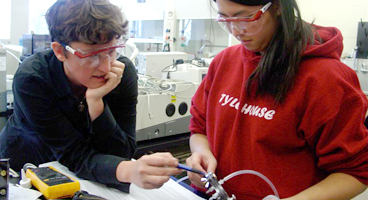Document Type
Article
Publication Date
6-1-2022
Publication Title
Journal of Medical Robotics Research
Abstract
This paper presents a tool-pose-informed variable center morphological polar transform to enhance segmentation of endoscopic images. The representation, while not loss-less, transforms rigid tool shapes into morphologies consistently more rectangular that may be more amenable to image segmentation networks. The proposed method was evaluated using the U-Net convolutional neural network, and the input images from endoscopy were represented in one of the four different coordinate formats (1) the original rectangular image representation, (2) the morphological polar coordinate transform, (3) the proposed variable center transform about the tool-tip pixel and (4) the proposed variable center transform about the tool vanishing point pixel. Previous work relied on the observations that endoscopic images typically exhibit unused border regions with content in the shape of a circle (since the image sensor is designed to be larger than the image circle to maximize available visual information in the constrained environment) and that the region of interest (ROI) was most ideally near the endoscopic image center. That work sought an intelligent method for, given an input image, carefully selecting between methods (1) and (2) for best image segmentation prediction. In this extension, the image center reference constraint for polar transformation in method (2) is relaxed via the development of a variable center morphological transformation. Transform center selection leads to different spatial distributions of image loss, and the transform-center location can be informed by robot kinematic model and endoscopic image data. In particular, this work is examined using the tool-tip and tool vanishing point on the image plane as candidate centers. The experiments were conducted for each of the four image representations using a data set of 8360 endoscopic images from real sinus surgery. The segmentation performance was evaluated with standard metrics, and some insight about loss and tool location effects on performance are provided. Overall, the results are promising, showing that selecting a transform center based on tool shape features using the proposed method can improve segmentation performance.
Keywords
Robot-assisted minimally invasive surgery, surgical tool segmentation, telesurgery, U-Net
Volume
7
Issue
2-3
DOI
10.1142/S2424905X22410033
ISSN
2424905X
Rights
© The Author(s)
Version
Version of Record
Recommended Citation
Huang, Kevin; Chitrakar, Digesh; Jiang, Wenfan; Yung, Isabella; and Su, Yun Hsuan, "Surgical Tool Segmentation with Pose-Informed Morphological Polar Transform of Endoscopic Images" (2022). Engineering: Faculty Publications, Smith College, Northampton, MA.
https://scholarworks.smith.edu/egr_facpubs/129


